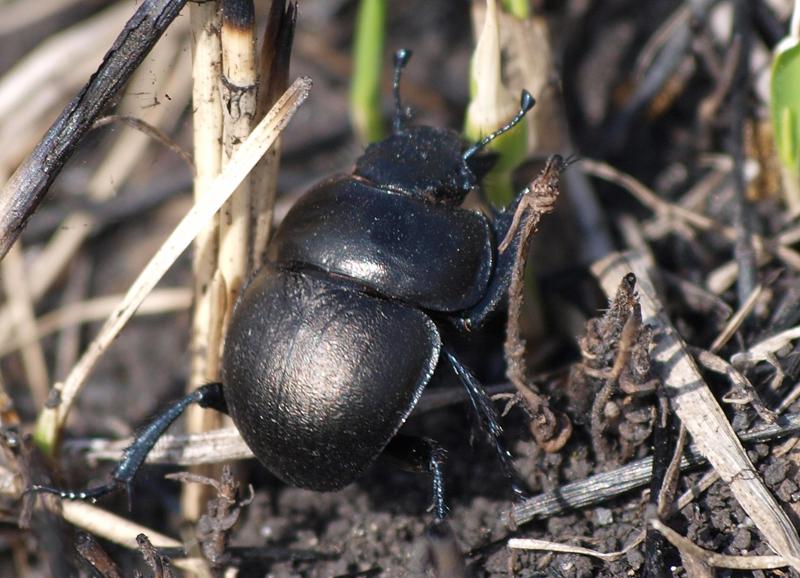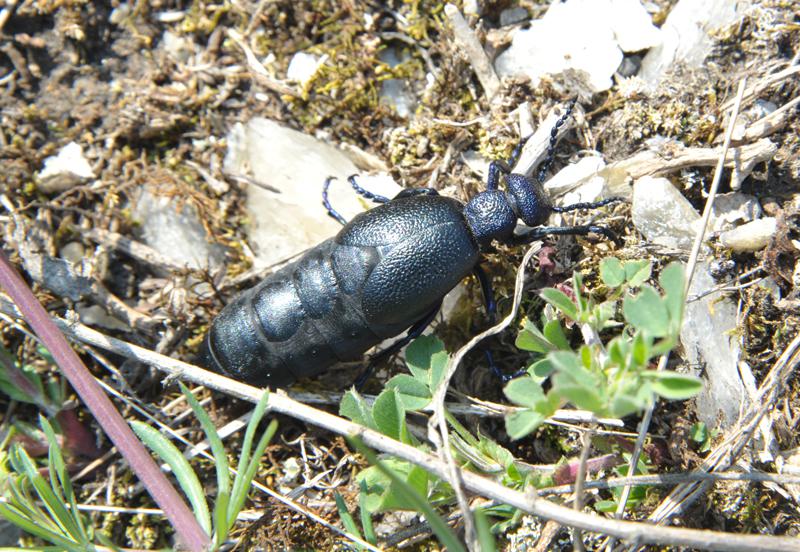Andrii Zamoroka
The soil Coleoptera are critically endangered in isolated steppe remnants of Burshtyn Opillya, because agriculturally transformed landscapes are impermeable barrier for their migration especially for flightless species. According to the theory of island biogeography, patch size and distance from similar patches affect species extinction and colonisation dynamics. It is observed loss of coleopteran diversity in small and isolated steppe remnants due to natural as well as human induced forces. The project is focused on identifying the clues forces, which cause extinctions processes and diversity loss and the implications for conservation of the soil Coleoptera in isolated steppe fragments of Burshtyn Opillya.

Lethrus apterus.
Burshtyn Opillya is a part of the westernmost boundary of the East European Forest Steppe sub-biome. The area of the region consists mostly from farmlands and settlements (75%), forests (16%), water surface (7.7%) and finally steppes (1.3%). At date steppes preserved at the localities mostly unsuitable for the agricultural activities, such as steep slopes of the hills, ravines, rocks and cliffs. Around 20 steppe patches are known in the region, which are highly fragmented, isolated and widely vary in size. Four of these patches are protected by Halych National Park, the rest are under permanent human impact.

Meloe proscarabeus.
The soil Coleoptera are critically endangered in isolated steppe remnants of Burshtyn Opillya, because agriculturally transformed landscapes are impermeable barrier for their migration especially for flightless species. According to the theory of island biogeography, patch size and distance from similar patches affect species extinction and colonisation dynamics. Soil Coleoptera are crucial components of the steppe ecosystems, because they engaged in humus production and circulation of chemical elements. Species-rich communities of soil Coleoptera indicate the ecosystem health and integrity. However, it is observed loss of coleopteran diversity in small and isolated steppe remnants due to natural as well as human induced forces.
The project provide the several purposes, listed below.
1. Preparing of comprehensive inventory list of steppe remnants on the territory of Burshtyn Opillaya. This includes collecting data on its location, size, distance to closest patches, type of exploitation, degradation or succession stages, etc.
2. Conduction of soil Coleoptera study in steppe remnants in Burshtyn Opillya. This includes identifying of study localities, methodological approaches, setting of research plots and material collection. Additionally, the environmental data will be collected e.g. vegetation composition, plants biomass and coverage, the soil temperature, humidity, acidity and humus contain.
3. Estimation of biodiversity levels of soil Coleoptera for each studied steppe patch. I will compare and statistically process the data. Finally, I will estimate extinction rates of soil Coleoptera and will create program for its restoration and conservation in the studied localities.
4. In cooperation with local NGOs, authorities and HNP, I will prepare scientific justifications for conservation of the studied steppes. In addition, I will create roadmap for future constructions of the steppe remnants connecting network.
5. Publishing of popular brochure and scientific monograph on soil Coleoptera of Burshtyn Opillya.